To compare the functional outcome of distal radius fractures treated with closed reduction and cast application versus volar plating
2 Professor, Department of Orthopaedics, Rajshree Medical and Research Institute, Bareilly, India
3 Associate Professor, Department of Orthopaedics, Rajshree Medical and Research Institute, Bareilly, India, Email: Sujalr66@gmail.com
Received: 11-Jan-2023, Manuscript No. jotsrr-23-86750; Editor assigned: 12-Jan-2023, Pre QC No. jotsrr-23-86750(PQ); Accepted Date: Jan 24, 2023 ; Reviewed: 18-Jan-2023 QC No. jotsrr-23-86750(Q); Revised: 19-Jan-2023, Manuscript No. jotsrr-23-86750(R); Published: 29-Jan-2023
This open-access article is distributed under the terms of the Creative Commons Attribution Non-Commercial License (CC BY-NC) (http://creativecommons.org/licenses/by-nc/4.0/), which permits reuse, distribution and reproduction of the article, provided that the original work is properly cited and the reuse is restricted to noncommercial purposes. For commercial reuse, contact reprints@pulsus.com
Abstract
Background: Fractures of distal radius account for 20% of all fractures treated in emergency department. These fractures result from low energy injuries in elderly population and high energy injuries in young adults. Most of these fractures are relatively uncomplicated and are effectively treated by closed reduction and casting. However, fractures that are unstable intra-articular can jeopardize the integrity of the articular congruence and kinematics of articulations resulting in high prevalence of complications. So to overcome these above complications, there is a shifting trend towards surgical management.
Aim: To compare the functional outcome of distal end radius fractures treated with closed reduction and cast application versus volar plating in our institution.
Methods: A randomized prospective interventional study was done in our institution in which all the patients of distal end of radius fractures were included as per inclusion and exclusion criteria. 30 patients were included in the study and followed up to 6 months. They were distributed equally into two groups i.e. 15 patients were treated surgically and the rest 15 conservatively. As all the patients were having similar characteristics, therefore no difference was noted among the groups w.r.t. demographic information. Patients were recommended for follow up at 6 days, 6 weeks, 3months and 6 months interval and routine x-rays were taken and dash scoring done to assess the functional recovery.
Results: 30 patients were included in this study and followed up to 6 months. The Affected limb DASH score at 6 months was compared in operative and no operative patients. In current study, Good score of Affected hand post-reduction dash score at 3 months was significantly more among Operative management. Fair score was significantly more among Conservative management. Excellent score at 6 months was significantly more among Operative management.
Conclusion: It can be concluded that surgical intervention for fracture distal end radius reduces chances of wrist joint stiffness and loss of reduction which gave good functional results as compared to conservative intervention. Hence, in our opinion surgical intervention for treatment of fracture distal end radius is a good method with excellent outcome.
Keywords
fracture, unstable, radius, surgical, outcome
Introduction
Distal end of radius fractures is one of the most frequent skeletal injuries seen in orthopaedic department’s distal radius fractures account for a major share of all fractured bones and are more prevalent in young men and older females [1]. These fractures most often occur in young individuals during sports or in an accident [2]. The most prevalent cause in elderly persons is a fall on an extended hand. Colles, Smith, Barton, and Chauffeur’s fractures are examples of specific variants [2]. X-rays are used to confirm the diagnosis, which is usually advised based on clinical symptoms [3]. The anatomical reduction of the articular surface and the extra articular alignment of the distal section of the radius impair the functional result in treatment of distal radius fracture [4].
The main goal of the treatment is that method of immobilization which maintain reduction to the normal anatomical position that leads to least amount of surgical morbidity. The outcome of the present available published data is tough to compare due to the various fracture patterns, different modalities of treatment and the conflicting outcomes in different studies.
30 Distal end radius fractures were divided into 2 groups of 15 in which 1st group was treated with closed reduction and cast application and 2nd group was treated with open reduction and volar plating, done between 2020 and 2022 at the Orthopaedics Department of Rajshree Medical and Research Institute, Bareilly, pre-reduction, post-reduction, 6 days, 6 weeks, 3 months and 6 months were assessed using DASH score.
Aim and Objectives
To compare the functional outcome of distal end radius fractures treated with closed reduction and cast application versus volar plating in our institution.
To asses and follow the functional and radiological outcome of results of distal radius fractures treated with closed reduction and cast application versus volar plating in our institution.
STUDY SITE
Department of Orthopaedics, Rajshree medical research institute Bareilly.
Study population
Patients of age 18 years and above with fractures of distal end of Radius
Study design
Randomized prospective interventional
Sample Size
30
To calculate the sample size based on the prevalence with an approximate 95% confidence level, following formula will be used,
Sample Size (n)=Z2 x P(100-P)/ r2
Z=2.84 at 95% confidence interval
P=Prevalence 9% Q= (100-P)
r=Allowable error 15%
Study Duration
The study was conducted over a period of 2 years i.e. from1st February 2020-30th November2022.
Ethical considerations
Informed consent was obtained from all the participants. Ethical approval for the study was obtained from the Institutional Ethical Committee.
Method
30 patients were included in the study and followed up to 6 months. They were distributed equally into two groups i.e. 15 patients were treated surgically and the rest 15 conservatively. As all the patients were having similar characteristics, therefore no difference was noted among the groups w.r.t. demographic information. Patients were recommended for follow up at 6 days, 6 weeks, 3months, and 6 months’ interval and dash scoring was done to assess the functional outcome.
Statistical Analysis
The results are presented in frequencies, percentages and mean ± SD. Chi-square test was used for comparisons. The p-value<0.05 was considered significant. All the analysis was carried out on SPSS 24.0 version
Inclusion Criteria
1. Patients in the age group>18 years.
2. Patients with distal radius fractures following road traffic accident or slip or fall on outstretched hand or assault.
3. Closed fractures
Exclusion criteria
1. Patients who didn’t give consent.
2. Pathological fractures.
3. Vascular injury.
4. Fractures with neurological involvement.
5. Infection or Poor skin conditions at operative site.
Radiographic evaluation was done using PA and Lateral X ray views of affected wrist.
Surgical Technique
1. Group 1 patients were treated with closed reduction and casting.
2. Group 2 patients were surgically managed with volar plating.
Patient was taken to the table in supine positon and anaesthesia was given (regional/general anaesthesia).
All patients were shifted to the operating table and placed in the supine position after being painted and draped with a tourniquet around the upper arm. The volar approach (modified Henry’s approach), was used the flexor carpi radials tendon was palpated and a skin incision was made over the anterior aspect of the forearm proximal to proximal wrist crease. Pronator quadratus was separated from the radius border in an L-shape in order to access the fracture’s dorsal site. In some patients, the pronator quadratus muscle was repaired with synthetic absorbable suture, while in other patients, the pronator quadratus was left intact as it is. Volar plating was performed after fracture reduction with traction and manipulation under C-arm guidance. The plate was fixed to the bone with screws.
Passive exercises were initiated on the first postoperative day with physiotherapy support. Additionally, all active and passive movements and mobilization were initiated following suture removal, and after six weeks, minimal weight bearing was permitted.
The outcome was evaluated using
1. DASH score.
2. Range of motion in terms of wrist joint flexion, extension, forearm supination and pronation, ulnar deviation, and radial deviation follow up was done at 6 days; 6 weeks, 3 months and 6 months’ post-operative were assessed using DASH score as in Table 1.
Table 1. Distribution of study population according to Age
| Age groups | Frequency | Percent (%) |
|---|---|---|
| 21 years-30 years | 9 | 30.00% |
| 31 years-40 years | 10 | 33.30% |
| 41 years-50 years | 4 | 13.30% |
| 51 years-60 years | 2 | 6.70% |
| Above 60 years | 5 | 16.70% |
Results
Majority of the study population belonged to 31 years-40 years (33.3%), 21 years-30 years (30.0%), Above 60 years (16.7%), 41 years-50 years (13.3%) and 51 years- 60 years (6.7%) as per given Fig. 1&2 and Table 2 and 3.
Table 2. Distribution of study population according to Gender
| Gender | Frequency | Percent (%) |
|---|---|---|
| Male | 14 | 46.70% |
| Female | 16 | 53.30% |
| Total | 30 | 100.00% |
Table 3. Distribution of study population according to Site of Injury
| Site of Injury | Frequency | Percent |
|---|---|---|
| Left wrist | 13 | 43.30% |
| Right Wrist | 17 | 56.70% |
As per Frykmans classification, Type 1 occurred among 13.3%, Type 2 among 13.3%, Type 3 among 33.3%, Type 4 among 10.0%, Type 5 among 10.0%, Type 6 among 6.7%, Type 7 among 3.3% and Type 8 among 10.0% (Fig. 3 and 4) and (Table 4 and 5).
Table 4. Distribution of study population according to Frykmans Classification
| Frykmans Classification Type | Frequency | Percent (%) |
|---|---|---|
| Type 1 | 4 | 13.3% |
| Type 2 | 4 | 13.3% |
| Type 3 | 10 | 33.3% |
| Type 4 | 3 | 10.0% |
| Type 5 | 3 | 10.0% |
| Type 6 | 2 | 6.7% |
| Type 7 | 1 | 3.3% |
| Type 8 | 3 | 10.0% |
Table 5. Distribution of study population according to Frequency
| Management Type | Frequency | Percent(%) |
|---|---|---|
| Operative | 15 | 50.0% |
| Conservative | 15 | 50.0% |
Operative management was done among 15 (50.0%) and Conservative among 15 (50.0%) patients.
The comparison between Operative and Conservative management using chi-square test there was a significant difference in affected hand post-reduction dash score at 6 days between Operative and Conservative management. Fair score was significantly more among Conservative management (Fig. 5 and Table 6).
Table 6. Distribution of study population according to affected hand postreduction dash score at 6 days
| Affected hand post-reduction dash score at 6 days | Management Type | |
|---|---|---|
| Operative | Conservative | |
| Fair | 1 | 9 |
| 6.70% | 60.00% | |
| Poor | 14 | 6 |
| 93.30% | 40.00% | |
| Chi-square value = 9.600, p-value = 0.002* | ||
The comparison of affected hand post reduction DASH score at 6 weeks between operative and conservative management using chi-square test which showed no significant difference (Fig. 6 and Table 7).
Table 7. Distribution of study population according to affected hand post reduction DASH score at 6 weeks
| Affected hand post reduction DASH score at 6 weeks | Management Type | |
|---|---|---|
| Operative | Conservative | |
| Good | 2 | 1 |
| 13.3% | 6.7% | |
| Fair | 11 | 12 |
| 73.3% | 80.0% | |
| Poor | 2 | 2 |
| 13.3% | 13.3% | |
| Chi-square value = 0.377, p-value = 0.828 | ||
The comparison between Operative and Conservative management using chi-square test that Good score of affected hand post-reduction dash score at 3months was significantly more among operative management. Fair score was significantly more among Conservative management (Fig. 7 and Table 8 & 9).
Table 8. Distribution of study population according to affected hand post reduction DASH score at 3 months
| Affected hand post reduction DASH score at 3 months | Management Type | |
|---|---|---|
| Operative | Conservative | |
| Excellent | 1 | 0 |
| 6.70% | 0.00% | |
| Good | 8 | 4 |
| 53.30% | 26.70% | |
| Fair | 4 | 9 |
| 26.70% | 60.00% | |
| Poor | 2 | 2 |
| 13.30% | 13.30% | |
| Chi-square value = 7.768, p-value = 0.045* | ||
Table 9. Distribution of study population according to affected hand post reduction DASH score at 6 months
| Affected hand post reduction DASH score at 6 months | Management Type | |
|---|---|---|
| Operative | Conservative | |
| Excellent | 15 | 7 |
| 100.00% | 46.70% | |
| Good | 0 | 6 |
| 0.00% | 40.00% | |
| Fair | 0 | 2 |
| 0.00% | 13.30% | |
| Chi-square value = 10.909, p-value = 0.004* | ||
The comparison of Affected ha nd po st re duction DA SH sc ore at 6 months between Operative and Conservative management using chisquare test showed that excellent score at 6 months was significantly more among operative management (Fig. 8).
The Affected limb pre-reduction DASH score was compared as per FRYKMANs CLASSIFICATION TYPE using the chi-square test showed no significant association between affected limb pre-reduction DASH score and FRYKMANs CLASSIFICATION TYPE (Table 10).
Table 10. Distribution of study population according to Affected limb pre reduction DASH score
| FRYKMANs CLASSIFICATION TYPE | Affected limb pre reduction DASH score | |
|---|---|---|
| Fair | Poor | |
| Type 1 | 2 | 2 |
| 50.00% | 50.00% | |
| Type 2 | 3 | 0 |
| 100.00% | 0.00% | |
| Type 3 | 4 | 7 |
| 36.40% | 63.60% | |
| Type 4 | 0 | 3 |
| 0.00% | 100.00% | |
| Type 5 | 0 | 3 |
| 0.00% | 100.00% | |
| Type 6 | 1 | 1 |
| 50.00% | 50.00% | |
| Type 7 | 0 | 1 |
| 0.00% | 100.00% | |
| Type 8 | 0 | 3 |
| 0.00% | 100.00% | |
| ꭓ2 value = 11.795, p-value = 0.107 | ||
The Affected limb DASH score at 6 days was compared as per Frykmans Classification Type using the chi-square test showed no significant association between affected limb DASH score at 6 days and Frykmans Classification Type (Table 11).
Table 11. Distribution of study population according to
| FRYKMANs CLASSIFICATION TYPE | Affected hand post reduction dash score at six days | ||
|---|---|---|---|
| Fair | Good | Poor | |
| Type 1 | 3 | 0 | 1 |
| 75.00% | 0.00% | 25.00% | |
| Type 2 | 3 | 0 | 0 |
| 100.00% | 0.00% | 0.00% | |
| Type 3 | 9 | 1 | 1 |
| 81.80% | 9.10% | 9.10% | |
| Type 4 | 2 | 1 | 0 |
| 66.70% | 33.30% | 0.00% | |
| Type 5 | 2 | 1 | 0 |
| 66.70% | 33.30% | 0.00% | |
| Type 6 | 2 | 0 | 0 |
| 100.00% | 0.00% | 0.00% | |
| Type 7 | 1 | 0 | 0 |
| 100.00% | 0.00% | 0.00% | |
| Type 8 | 1 | 0 | 2 |
| 33.30% | 0.00% | 66.70% | |
| ꭓ2 value = 14.411, p-value = 0.420 | |||
The Affected limb DASH score at 6 we eks was compared as pe r Frykmans Classification Type using the chi-square test showed no significant association between affected limb DASH score at 6 weeks and Frykmans Classification Type (Table 12).
Table 12. Distribution of study population according to affected hand post reduction dash score at six weeks
| FRYKMANs CLASSIFICATION TYPE | Affected hand post reduction dash score at six weeks | |||
|---|---|---|---|---|
| Excellent | Fair | Good | Poor | |
| Type 1 | 0 | 2 | 1 | 1 |
| 0.00% | 50.00% | 25.00% | 25.00% | |
| Type 2 | 0 | 2 | 1 | 0 |
| 0.00% | 66.70% | 33.30% | 0.00% | |
| Type 3 | 0 | 6 | 4 | 1 |
| 0.00% | 54.50% | 36.40% | 9.10% | |
| Type 4 | 1 | 1 | 1 | 0 |
| 33.30% | 33.30% | 33.30% | 0.00% | |
| Type 5 | 0 | 0 | 3 | 0 |
| 0.00% | 0.00% | 100.00% | 0.00% | |
| Type 6 | 0 | 2 | 0 | 0 |
| 0.00% | 100.00% | 0.00% | 0.00% | |
| Type 7 | 0 | 0 | 1 | 0 |
| 0.00% | 0.00% | 100.00% | 0.00% | |
| Type 8 | 0 | 0 | 1 | 2 |
| 0.00% | 0.00% | 33.30% | 66.70% | |
| ꭓ2 value = 27.640, p-value = 0.151 | ||||
The Affected limb DASH score at 3 months was compared as per FRYKMANs CLASSIFICATION TYPE using the chi-square test showed no significant association between affected limb DASH score at 3 months and FRYKMANs CLASSIFICATION TYPE (Table 13).
Table 13. Distribution of study population according to affected hand post reduction dash score at 3 months
| FRYKMANs CLASSIFICATION TYPE | Affected hand post reduction dash score at 3 months | |||
|---|---|---|---|---|
| Excellent | Fair | Good | Poor | |
| Type 1 | 0 | 1 | 2 | 1 |
| 0.00% | 25.00% | 50.00% | 25.00% | |
| Type 2 | 0 | 2 | 1 | 0 |
| 0.00% | 66.70% | 33.30% | 0.00% | |
| Type 3 | 1 | 2 | 7 | 1 |
| 9.10% | 18.20% | 63.60% | 9.10% | |
| Type 4 | 1 | 0 | 2 | 0 |
| 33.30% | 0.00% | 66.70% | 0.00% | |
| Type 5 | 1 | 0 | 2 | 0 |
| 33.30% | 0.00% | 66.70% | 0.00% | |
| Type 6 | 1 | 0 | 1 | 0 |
| 50.00% | 0.00% | 50.00% | 0.00% | |
| Type 7 | 1 | 0 | 0 | 0 |
| 100.00% | 0.00% | 0.00% | 0.00% | |
| Type 8 | 0 | 0 | 2 | 1 |
| 0.00% | 0.00% | 66.70% | 33.30% | |
| ꭓ2 value = 20.125, p-value = 0.513 | ||||
The Affected limb DASH score at 6 months was compared as per FRYKMANs CLASSIFICATION TYPE using the chi-square test showed no significant association between affected limb DASH score at 6 months and FRYKMANs CLASSIFICATION TYPE (Table 14).
Table 14. Distribution of study population according to affected hand post reduction dash score at 6 months
| FRYKMANs CLASSIFICATION TYPE | Affected hand post reduction dash score at 6 months | ||
|---|---|---|---|
| Excellent | Fair | Good | |
| Type 1 | 1 | 1 | 2 |
| 25.00% | 25.00% | 50.00% | |
| Type 2 | 1 | 0 | 2 |
| 33.30% | 0.00% | 66.70% | |
| Type 3 | 8 | 1 | 2 |
| 72.70% | 9.10% | 18.20% | |
| Type 4 | 3 | 0 | 0 |
| 100.00% | 0.00% | 0.00% | |
| Type 5 | 3 | 0 | 0 |
| 100.00% | 0.00% | 0.00% | |
| Type 6 | 2 | 0 | 0 |
| 100.00% | 0.00% | 0.00% | |
| Type 7 | 1 | 0 | 0 |
| 100.00% | 0.00% | 0.00% | |
| Type 8 | 3 | 0 | 0 |
| 100.00% | 0.00% | 0.00% | |
| ꭓ2 value = 13.691, p-value = 0.473 | |||
Discussion
Distal radius fractures are common and mismanaged injuries. Several studies have been directed towards clarifying which surgical treatment method would be best for fracture of the distal extremity of the radius. Recently documented the increasing popularity of open reduction and internal fixation, especially since the introduction of locked volar plates [5]. The majority of the studies have used subjective tools for measuring quality of life, such as the Gartland and Werley calculation and the DASH calculation while others have given greater emphasis to the radiographic parameters obtained after surgical reduction of fractures of the distal extremity of the radius [6, 7]. In present study, majority of the study population belonged to 31 years-40 years (33.3%), 21 years-30 years (30.0%), Above 60 years (16.7%), 41 years-50 years (13.3%) and 51 years-60 years (6.7%). Similar to our study. In the study by Kevin and Chung et al, the average age of the patients was 48.9 years with minimum age 18 years and maximum years 83 years [8]. Arora. Stated that the average age of the patients was 57 years (17 years-79 years) [9]. In the study by Killic A the average age of the patients was 45 years (18 years-77 years) [10]. In our study, the study population had 46.7% males and 53.3% females. Chavhan AN et al. stated that most (71.4%) of the patients were females as compared with males (28.6%) [11]. the study done by Hanae Minegishi included mostly females (80%) and males were 20% [12]. Fok WM, reported that there were 57.7% male and 42.3% were female while Tank Gyaneshwarstudy had 65%females and 35% males [10, 13]. In current study, Majority of the study population had injury on the right wrist (56.7%) followed by left wrist (43.3%). Khan. Found that Left side was involved in 37% and the right side was involved in 63% [14]. We observed that as per Frykmans Classification, Type 1 occurred among 13.3%, Type 2 among 13.3%, Type 3 among 33.3%, Type 4 among 10.0%, Type 5 among 10.0%, Type 6 among 6.7%, Type 7 among 3.3% and Type 8 among 10.0%.Testa found that in the surgical group, type A fracture was among 20.5%, type B fracture among 38.46% and an intra articular fracture among 41% and in the conservative group, type A fracture among 36%) B fractures among 40% and C fractures among 23% [15]. The DASH questionnaire has been widely used to analyze problems related to the arm, shoulder, and hand from the patient’s perspective. The questionnaire evaluates the degree of difficulty in performing physical activities, the severity of symptoms along with the impact of the health problem on the patient’s daily functioning [16].
In current study, Good score of affected hand post-reduction dash score at 3 months was significantly more among Operative management. Fair score was significantly more among Conservative management. Excellent score at 6 months was significantly more among Operative management. In line with our study, Ochen [14]. Analyzing data from all age-groups, has also reported significantly better DASH scores in patients undergoing operative management of distal radius fractures as compared to those undergoing non-operative treatment (Mean difference-5.22).
Conclusion
The present study was done to compare the functional outcome of distal radius fractures treated with closed reduction and cast application versus volar plating. Majority of the study population belonged to 31 years-40 years (33.3%), 21 years-30 years (30.0%), Above 60 years (16.7%), 41 years-50 years (13.3%) and 51 years- 60 years (6.7%). The study population had 46.7% males and 53.3% females.
Majority of the study population had injury on the right wrist (56.7%) followed by left wrist (43.3%). As per Frykmans Classification, Type 1 occurred among 13.3%, Type 2 among 13.3%, Type 3 among 33.3%, Type 4 among 10.0%, Type 5 among 10.0%, Type 6 among 6.7%, Type 7 among 3.3% and Type 8 among 10.0%. Operative management was done among 15 (50.0%) and conservative among 15 (50.0%) patients.
Good score of affected hand post-reduction dash score at 3 months was significantly more among Operative management. Fair score was significantly more among Conservative management. Excellent score at 6 months was significantly more among Operative management.
It remains clear by this study that using ORIF with a plate and screw is the best treatment for distal radius fractures.
References
- MacIntyre NJ, Dewan N. Epidemiology of distal radius fractures and factors predicting risk and prognosis. J Hand Ther. 2016; 29(2):136-45. [Google Scholar]
[CrossRef]
- . Epidemiology of distal radius fractures and factors predicting risk and prognosis.
- Alluri RK, Hill JR, Ghiassi A. Distal radius fractures: approaches, indications, and techniques. J hand surg. 2016; 41(8):845-54. [Google Scholar]
[CrossRef]
- Orbay JL, Fernandez DL. Volar fixation for dorsally displaced fractures of the distal radius: a preliminary report. J hand surg. 2002; 27(2):205-15. [Google Scholar]
[CrossRef]
- Donimath V.S., Akash A., Barker M. A comparative study of functional outcome of different modalities of treatments for fractures of distal end of radius. J Evid Based Med Healthc. 2017;4(64):3866-3870.[Google Scholar]
[CrossRef]
- Minegishi H, Dohi O, An S, et al. Treatment of unstable distal radius fractures with the volar locking plate. Upsala j med sci. 2011; 116(4):280-4. [Google Scholar]
[CrossRef]
- Testa G, Vescio A, Di Masi P, et al. Comparison between surgical and conservative treatment for distal radius fractures in patients over 65 years. J Funct Morphol Kinesiol. 2019; 4(2):26. [Google Scholar]
[CrossRef]
- Gyaneshwar T, Kumar GA, Parvez A, et al. Anatomical and functional evaluation of distal end radius fractures managed by volar plating: a prospective study. J Evol Med Dent Sci. 2013; 2(7):802-12. [Google Scholar]
- Fowler JR, Ilyas AM. Prospective evaluation of distal radius fractures treated with variable-angle volar locking plates. J Hand Surg. 2013; 38(11):2198-203. [Google Scholar]
[CrossRef]
- Ochen Y, Peek J, van der Velde D, et al. Operative vs nonoperative treatment of distal radius fractures in adults: a systematic review and meta-analysis. JAMA network open. 2020; 3(4):e203497-. [Google Scholar]
[CrossRef]
- Azzopardi T, Ehrendorfer S, Coulton T, et al. Unstable extra-articular fractures of the distal radius: a prospective, randomised study of immobilisation in a cast versus supplementary percutaneous pinning. J Bone Jt Surg. British Volume. 2005; 87(6):837-40. [Google Scholar]
[CrossRef]
- Chen Y, Chen X, Li Z, et al. Safety and efficacy of operative versus nonsurgicalmanagement of distal radius fractures inelderly patients: a systematic review and meta-analysis. J Hand Surg Am 2016; 41: 404-413. [Google Scholar]
[CrossRef]
- Chan YH, Foo TL, Yeo CJ, et al. Comparison between cast immobilization versus volar locking plate fixation of distal radius fractures in active elderly patients, the Asian perspective. Hand Surg. 2014; 19(01):19-23. [Google Scholar]
[CrossRef]
- Bartl C, Stengel D, Gebhard F, et al. The treatment of displaced Intra-articular distal radius fractures in elderly patients: a Randomized Multi-center Study (ORCHID) of open reduction and volar locking plate fixation versus closed reduction and cast immobilization. Dtsch Ärztebl Int. 2014; 111(46):779. [Google Scholar]
[CrossRef]
- Martinez-Mendez D, Lizaur-Utrilla A, de-Juan-Herrero J. Intra-articular distal radius fractures in elderly patients: a randomized prospective study of casting versus volar plating. J Hand Surg. (European Volume). 2018; 43(2):142-7. [Google Scholar]
[CrossRef]
- Abbaszadegan H, Von Sivers K, Jonsson U. Late displacement of Colles' fractures. Int orthop. 1988; 12(3):197-9. [Google Scholar]
[CrossRef]

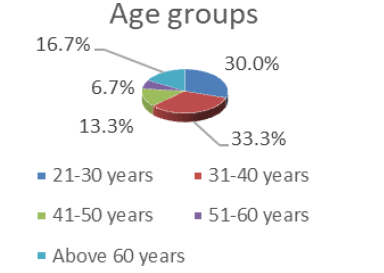
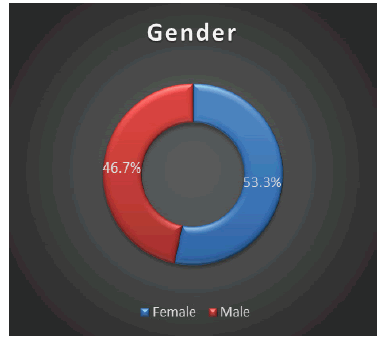
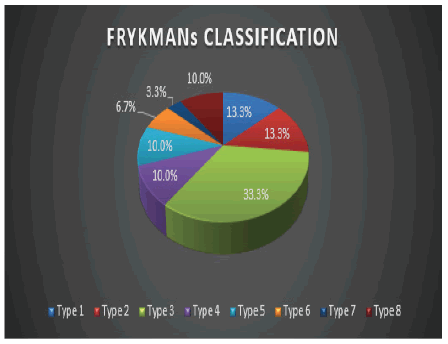
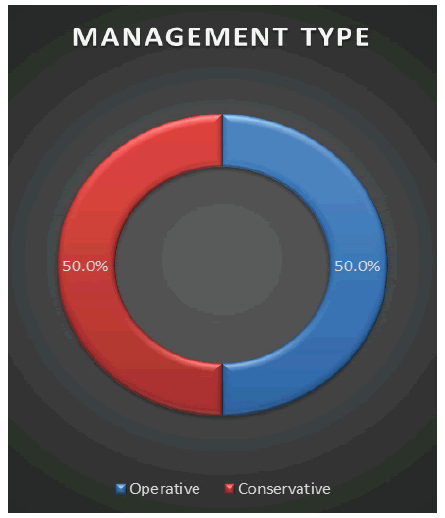
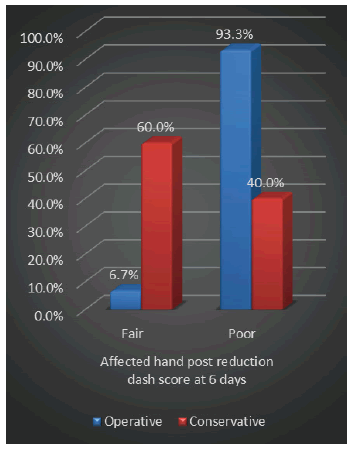
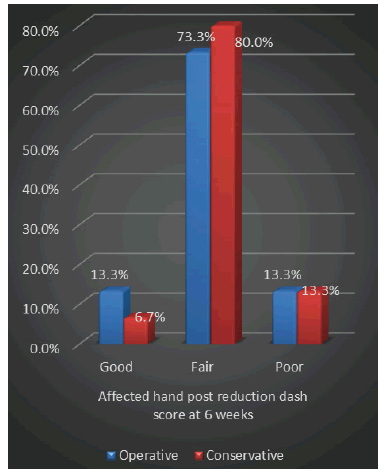
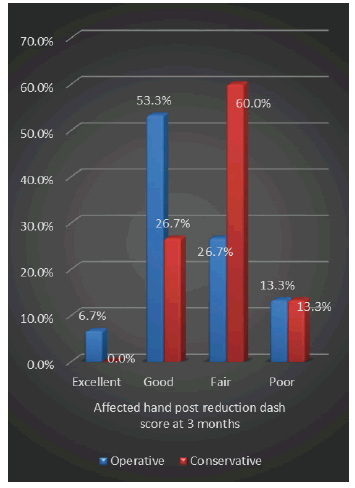
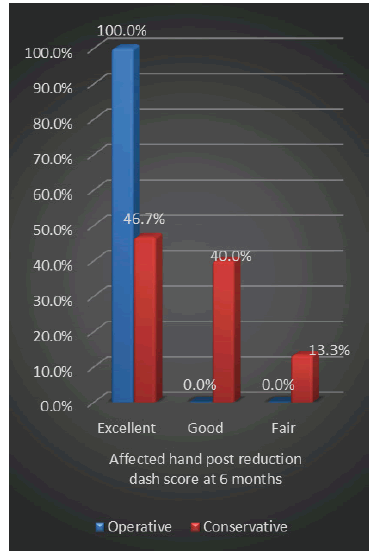


 Journal of Orthopaedics Trauma Surgery and Related Research a publication of Polish Society, is a peer-reviewed online journal with quaterly print on demand compilation of issues published.
Journal of Orthopaedics Trauma Surgery and Related Research a publication of Polish Society, is a peer-reviewed online journal with quaterly print on demand compilation of issues published.